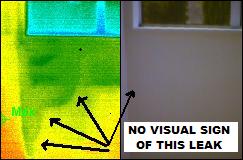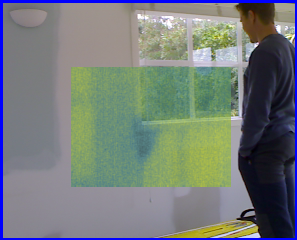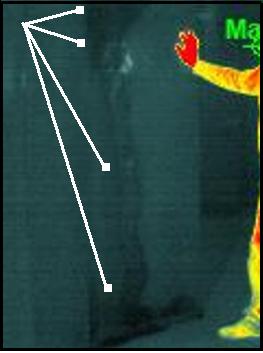Do you have any skylights in your home?
Have you seen signs of paint changing colour of bubbling in the area?
Whilst doing a leak inspection in St Heliers recently, I came across a leaking skylight that the home owner had no idea about. The interesting part was there were no ‘signs’ of a leak on the ceiling or anywhere around the skylight!
The home owner had called us out for a completely seperate leak detection, but whilst I was there the thermal imaging camera spotted this leak in the photo below. The dark area is a thermal image overlayed over the skylight so you can see what we see through the infrared camera. This leak was dripping out the light fitting where arrow is pointing…
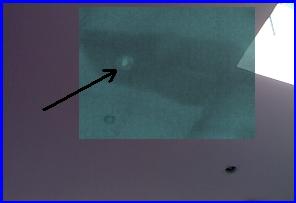
If you would like your skylights checked for leaks (before it drips down onto your furniture or carpet), we give free quotes over the phone.
(The red colour in the image is the skylight… it’s warmer in temperature then the surrounding gib board. The dark patch on the corner is a hidden leak that hasn’t penetrated through just yet)
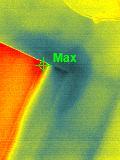
Here’s another example of a leaking skylight which was tracking down a ceiling (darks areas indicate water leak)… thanks to a faulty flashing detail.
![]()

